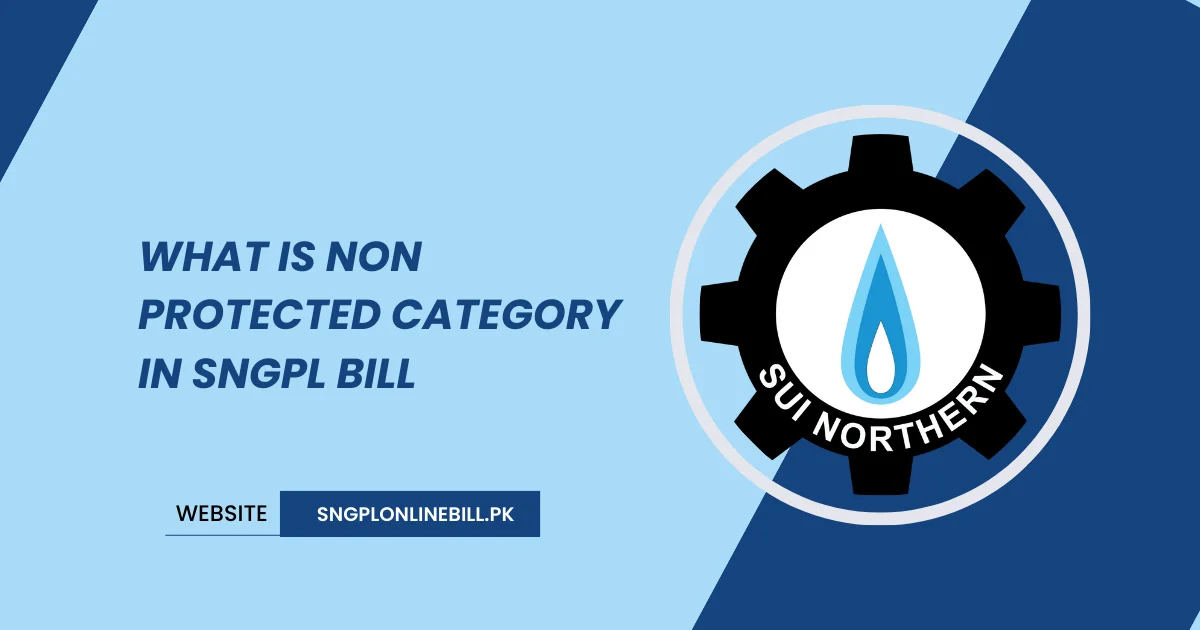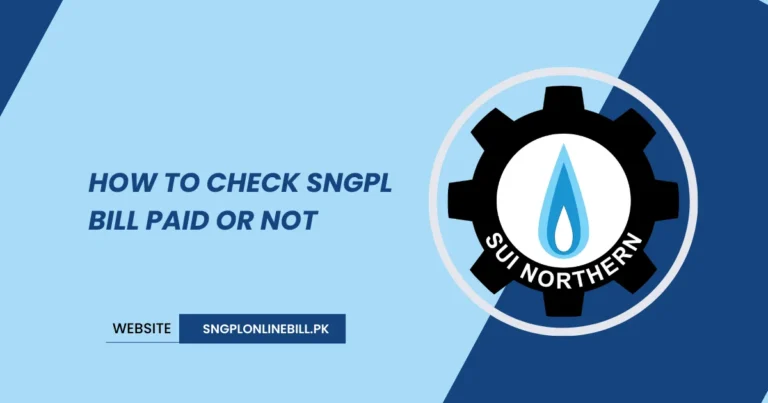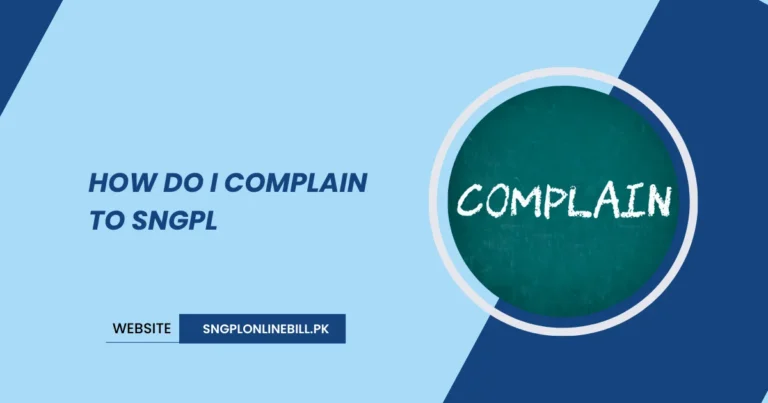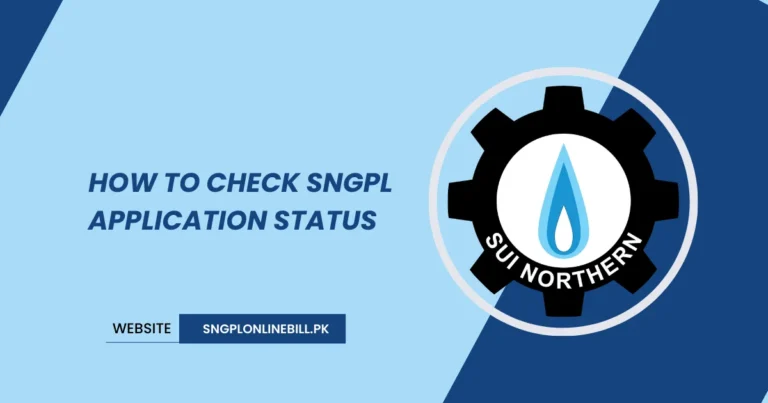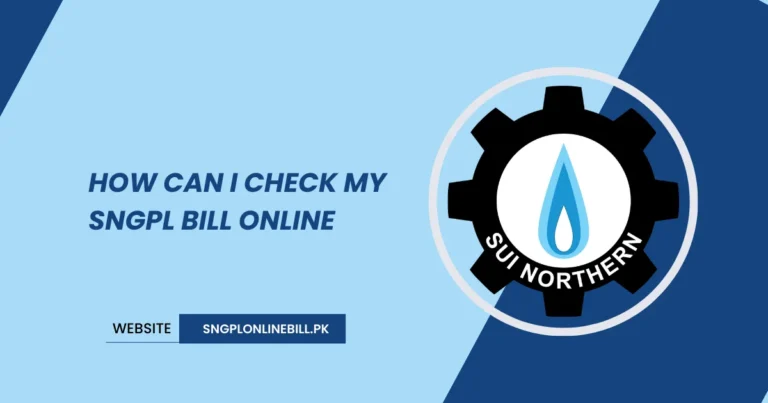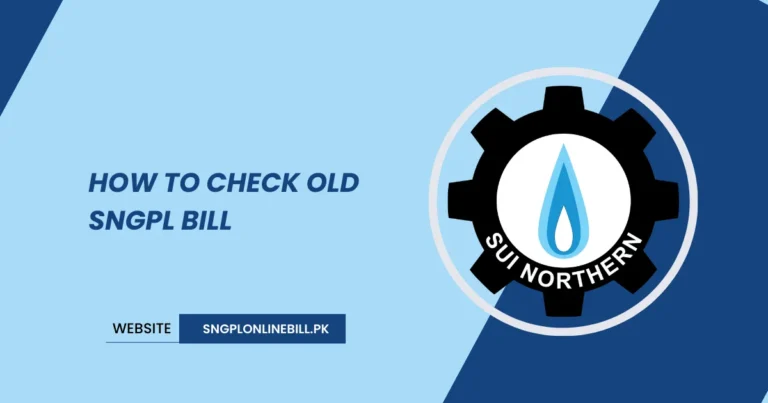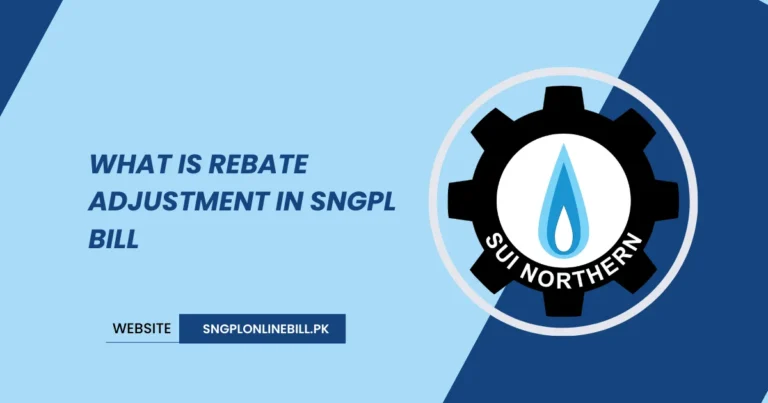What Is Non-Protected Category In SNGPL Bill?
The Sui Northern Gas Pipelines Limited (SNGPL) is responsible for supplying natural gas to a large part of Pakistan. When you receive your SNGPL bill, you might come across the term “Non-Protected Category.” This article explains what this category means and how it affects your gas charges.
What is the Domestic Gas Consumer Classification?
SNGPL classifies domestic gas consumers into two categories: Protected and Non-Protected. This classification determines the gas rates and certain charges you see on your bill.
Protected Category:
This category includes domestic consumers whose average gas consumption during the winter months (November to February) is less than or equal to 0.9 cubic meters per day (hm³/day). These consumers are considered to be using gas for essential purposes like cooking and heating water.
Non-Protected Category:
This category includes all other domestic consumers who do not qualify for the Protected Category. This could be due to higher gas consumption during winters or simply not having a consumption history that meets the criteria.
Why is There a Classification?
The government subsidizes natural gas to ensure affordability for essential domestic use. The Protected Category classification ensures that those who rely on gas for basic needs benefit from lower rates.
What are the Implications of Non-Protected Category?
Being classified as Non-Protected means a few key differences on your SNGPL bill:
Gas Rates:
Non-protected consumers pay a higher gas rate per unit (MMBTU) compared to the Protected Category. The specific rates are tiered based on your gas consumption. You can find the current gas rates on the SNGPL website [SNGPL Sales Price Notification].
Fixed Charges:
Non-protected consumers also pay a higher fixed monthly charge compared to the Protected Category. This fixed charge applies until a certain consumption level (typically 1.5 hm³) and then increases for higher consumption.
Here’s a table summarizing the key differences:
| Feature | Protected Category | Non-Protected Category |
|---|---|---|
| Gas Rates | Lower per MMBTU | Higher per MMBTU |
| Fixed Charges | Lower fixed monthly charge | Higher fixed monthly charge (up to a certain consumption level) |
How to Check Your Category?
Unfortunately, your SNGPL bill might not explicitly mention your category. However, you can identify it based on the gas rates and fixed charges you are being billed for. If you’re unsure, you can contact SNGPL customer service for clarification.
Can You Qualify for the Protected Category?
If you believe your gas consumption falls within the criteria for the Protected Category, you can apply to SNGPL for reclassification. This typically involves submitting your past gas consumption data, especially for the winter months.
Reducing Your Gas Bill as a Non-Protected Consumer
Even if you fall under the Non-Protected Category, there are ways to potentially reduce your gas bill:
Monitor Your Consumption:
Be mindful of your gas usage and identify areas where you can conserve. This could involve using energy-efficient appliances, practicing good cooking habits, and ensuring proper insulation in your home.
Pay Bills on Time:
Avoid late payment surcharges by paying your bills within the due date.
Explore Alternative Energy Sources:
Consider using alternative energy sources like solar water heaters to supplement your gas usage.
By understanding the Non-Protected Category and taking steps to manage your gas consumption, you can make informed decisions to optimize your SNGPL bill.
Additional Considerations
- This explanation is based on publicly available information and SNGPL’s published gas rates. Specific charges and rules might change, so it’s always recommended to refer to the latest SNGPL notifications for the most up-to-date details.
- If you have any specific questions or require clarification on your bill, contact SNGPL customer service for assistance.
This article provides a basic understanding of the Non-Protected Category in SNGPL bills. Remember, managing your gas consumption and staying informed about regulations can help you make informed choices and potentially save on your energy costs.
